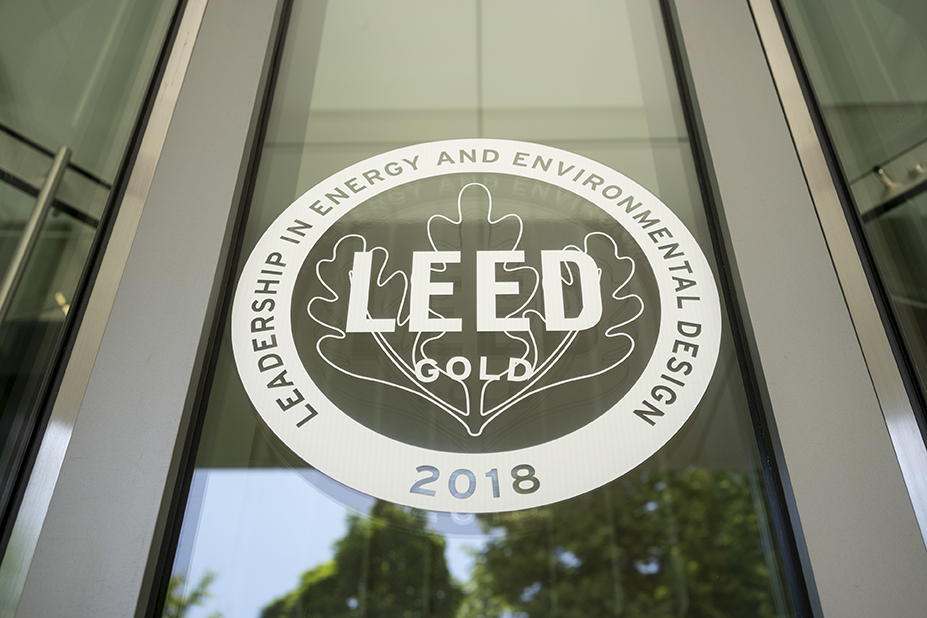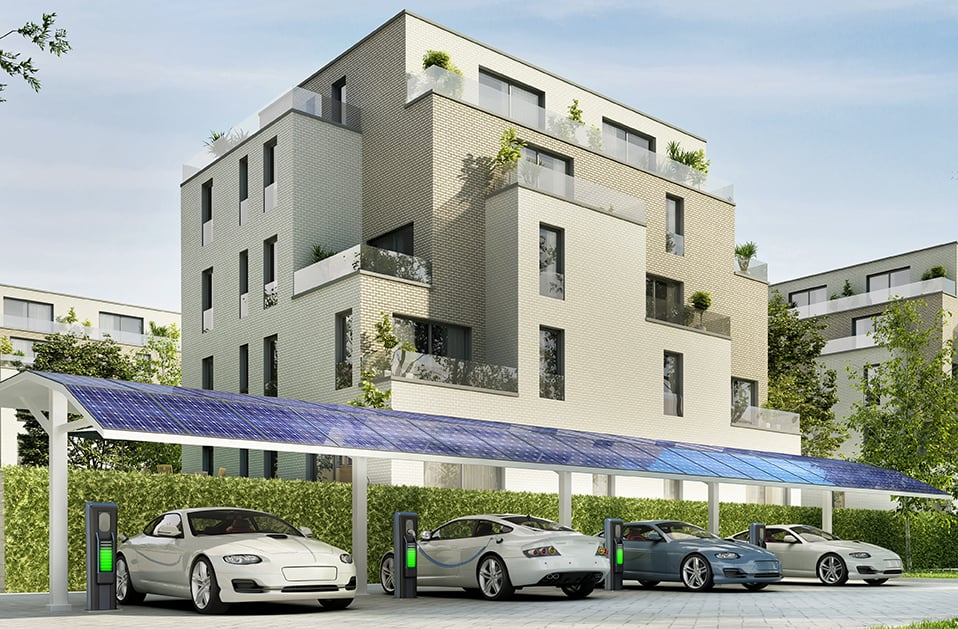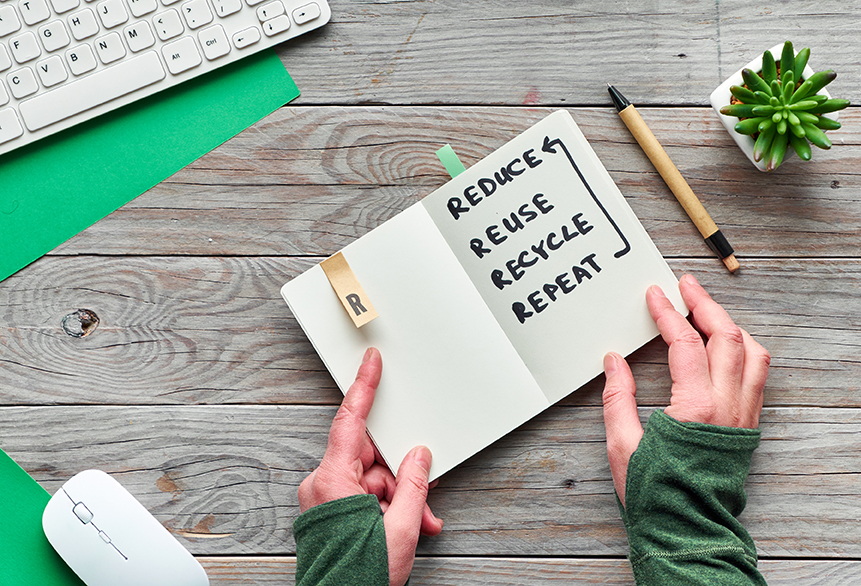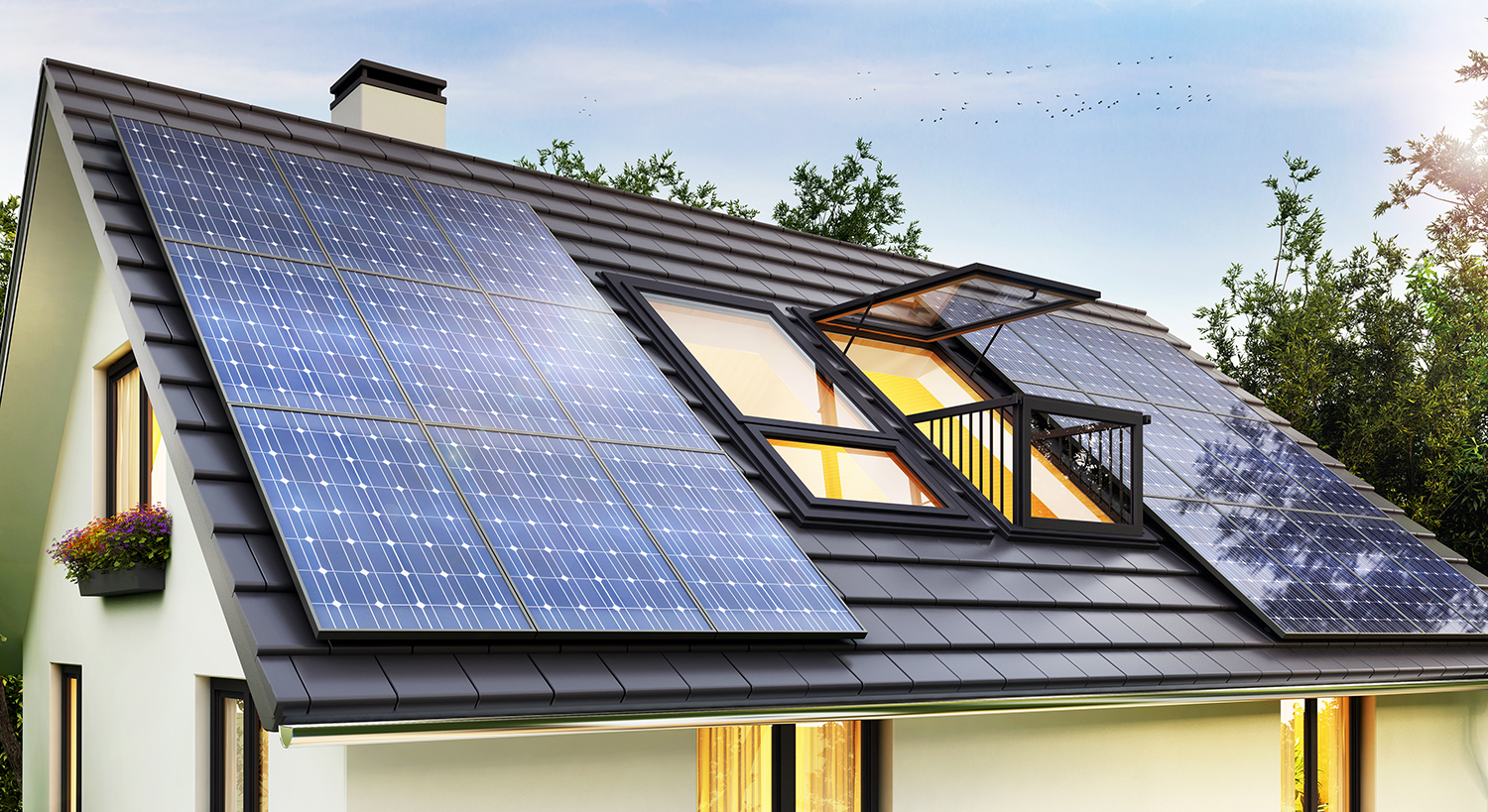The real estate industry plays an important role in the realm of carbon emissions. The construction of homes requires a large input of resources—starting in the planning stages and extending through the entire lifespan of the home.
At the same time, the real estate industry creates many positive impacts as well. It creates jobs across many fields—architects, builders, craftsman, designers, landscapers, and so many more. Owning a home allows individuals and families to live their lives from a reliable home base of their choosing.
So what can we do to manage our impact on the planet? Let’s look at a few ways we can reduce our carbon footprint.
The Real Impact of Real Estate
Architecture 2030, a nonprofit organization with the goal to “transform the built environment from the major emitter of greenhouse gases to a central solution to the climate crisis,” reports that real estate contributes a whopping 49% of the world’s carbon emissions.

About 30% of that comes from the construction process, and 70% from regular building operations. The operations percentage includes lingering effects from the materials used in construction. Design concepts, materials, transportation of those materials, wasteful byproducts, utilities, and energy usage all add up.
There’s no doubt that these are staggering estimates. Such large numbers, though, mean that even small changes can make a big difference.
The Construction Side
When purchasing a brand new home, you are in a great position to seek out builders who use sustainable materials like wood, which—according to the Climate Change Committee—actually has a negative footprint because it holds more carbon than it emits. Recycled steel, as well as raw, unpolished materials also offer more carbon friendly alternatives to traditional steel and cement.
From a design perspective, try to incorporate sustainable practices into the very backbone of the building. It’s easier to design a house with passive solar and EV charging ports already in mind, for instance, than to add them in retroactively. Outfitting a building with green components will also increase the home’s value in the long term.
The Living Side
Even if you don’t settle into a home or building that’s designed to be green from the ground up, you can still significantly reduce its carbon footprint.
Revamping your heating, cooling, ventilation, insulation, water, and/or energy systems are a great way to reduce the carbon footprint of your home. More efficient insulation, heat pumps, smart thermostats, and modern air conditioning systems use fewer fossil fuels than ever before. Sensor-based lighting, Energy Star appliances, electric stoves, and solar panels save resources that accumulate over time for significant environmental benefits in the long run.

Thinking in terms of the big picture can help justify some of these changes. Eco-friendly homes are only increasing in demand. Play the long game for your own good and that of the planet.
To get an idea of where you’re starting from, head to the Household Carbon Footprint Calculator courtesy of the EPA. You can use estimates based on your location and area averages, or input your own information based on structural details and utility bills for a more personalized look at your current impact. From there, work on making energy-efficient upgrades to watch that number plummet.
We’re all in it together, and the onus doesn’t fall on any one sector of the industry. From architects and contractors to investors and everyday homeowners, we can all do our part at every stage of the game.

-
Don’t Miss This Prime Spring Window To Sell Your House
According to Realtor.com, the best week to list your house this year was April 13–19. Continue reading -
4 Ways To Make an Offer That Stands Out This Spring
Now that spring is here, more and more buyers are jumping back… Continue reading -
The #1 Thing Sellers Need To Know About Their Asking Price
When you put your house on the market, you want to sell… Continue reading -
Paused Your Moving Plans? Here’s Why It Might Be Time To Hit Play Again
Last year, 70% of buyers abandoned their home search – and maybe you were… Continue reading




